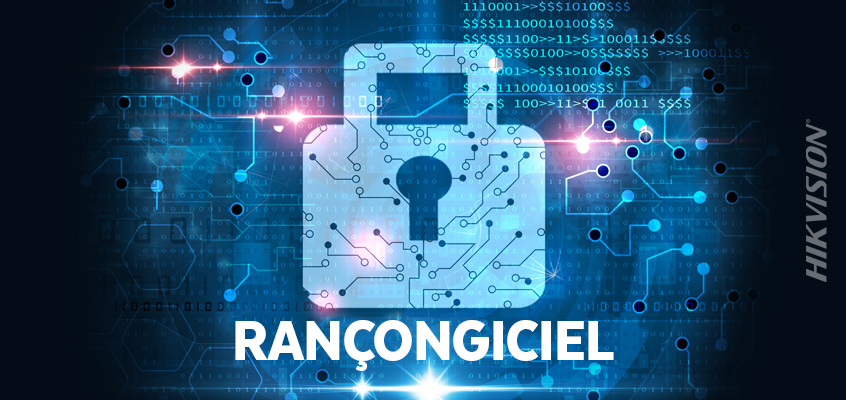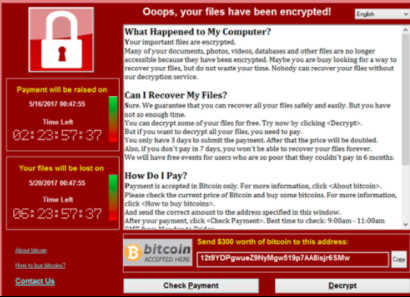Microsoft met en garde contre la vulnérabilité des rançongiciels Android, le directeur principal de la cybersécurité Hikvision propose 4 conseils pour les éviter

Hikvision vise à fournir des informations opportunes sur les dernières cybermenaces. Dans le blogue d'aujourd'hui, Chuck Davis, directeur principal de la cybersécurité chez Hikvision, présente un rançongiciel détaillant une vulnérabilité Android de rançongiciel et va fournir des conseils pour vous aider à éviter d'être victime de cette menace.
C’est quoi un rançongiciel ?
Le rançongiciel est une forme diabolique de malware qui est installé silencieusement sur l'ordinateur d'une personne après avoir été victime d'une attaque d’hameçonnage. Vous ne saurez pas que votre ordinateur est infecté par un rançongiciel jusqu'à ce qu'il soit trop tard.
Le rançongiciel crypte silencieusement tous les fichiers et dossiers de votre ordinateur, ainsi que toutes les données sur une clé USB connectée ou des lecteurs partagés montés, puis télécharge la clé de décryptage vers le pirate informatique qui vous a incité à installer le rançongiciel. Vous verrez alors un écran apparaître sur votre ordinateur qui vous informe que vos données sont cryptées. Pour obtenir la clé permettant de décrypter vos fichiers, vous devez payer une rançon au pirate informatique.
Les rançons sont souvent des centaines ou des milliers de dollars américains et sont collectées en Bitcoin, il est donc difficile à retracer. La bonne nouvelle est que si vous avez une bonne sauvegarde de données, vous pouvez ignorer la rançon et réinstaller votre système d'exploitation et restaurer vos fichiers. Bien que les rançongiciels soient diaboliques, ils nous ont donné une chose, nous pouvons désormais attribuer une valeur monétaire aux sauvegardes. En plus de votre temps, une bonne sauvegarde en temps opportun vaut au moins des centaines, voire des milliers de dollars.

Microsoft met en garde contre le rançongiciel Android
Le rançongiciel mobile n'est pas nouveau, mais Microsoft a récemment écrit à propos d'un ‘‘élément d'un rançongiciel Android particulièrement sophistiqué avec des techniques et un comportement novateur, illustrant l'évolution rapide des menaces mobiles que nous avons également observées sur d'autres plates-formes.’’
Comme avec la plupart des rançongiciels Android, ce rançongiciel ne crypte pas réellement les fichiers. Au lieu de cela, il verrouille l'écran de l'appareil mobile avec une note de rançon afin que l'appareil devienne inutilisable. ‘‘Une fois installé, le rançongiciel prend le contrôle de l'écran du téléphone et empêche l'utilisateur de rejeter la note de rançon - qui est conçue pour ressembler à un message des forces de l'ordre locales informant les utilisateurs qu'ils ont commis un crime et doivent payer une amende’’, a rapporté ZDNet.
4 conseils pour éviter les rançongiciels
Les rançongiciels sont un problème en croissance rapide qui affecte les serveurs, les ordinateurs de bureau et les appareils mobiles dans les maisons, les entreprises et les gouvernements. Vous trouverez ci-dessous quelques conseils pour vous éviter d'en être victime.
1. Sauvegardes de données : la première et la plus importante chose que vous pouvez faire est de sauvegarder vos appareils. Consultez l'article Hikvision sur les sauvegardes de données.
2. Correctifs: les correctifs sont des mises à jour d'un programme informatique ou de ses données qui l'améliorent ou le corrigent. En installant les correctifs dès leur publication ou en définissant des correctifs automatiques, le cas échéant, vous pouvez maintenir votre système à jour.
3. Authentification multifacteur (AMF) : activez l’AMF là où elle est disponible pour mieux protéger vos comptes et appareils. Cela protège également contre les attaques de bourrage d'identifiants.
4. Utilisez un gestionnaire de mots de passe : l'utilisation d'un outil de gestion des mots de passe peut vous aider à créer des mots de passe forts et uniques pour chaque compte. Un gestionnaire de mots de passe est un outil logiciel utilisé pour stocker tous vos mots de passe dans un fichier crypté afin que vous, et personne d'autre, y ayez un accès très facile, contribuant ainsi à minimiser les problèmes de sécurité.
Pour plus de conseils et pour savoir ce que vous devez faire si vous êtes victime d'une attaque de rançongiciel, lisez la fiche de conseils sur stayafeonline.org. Pour en savoir plus sur les vulnérabilités et les tendances en matière de cybersécurité, visitez ce lien Hikvision.
